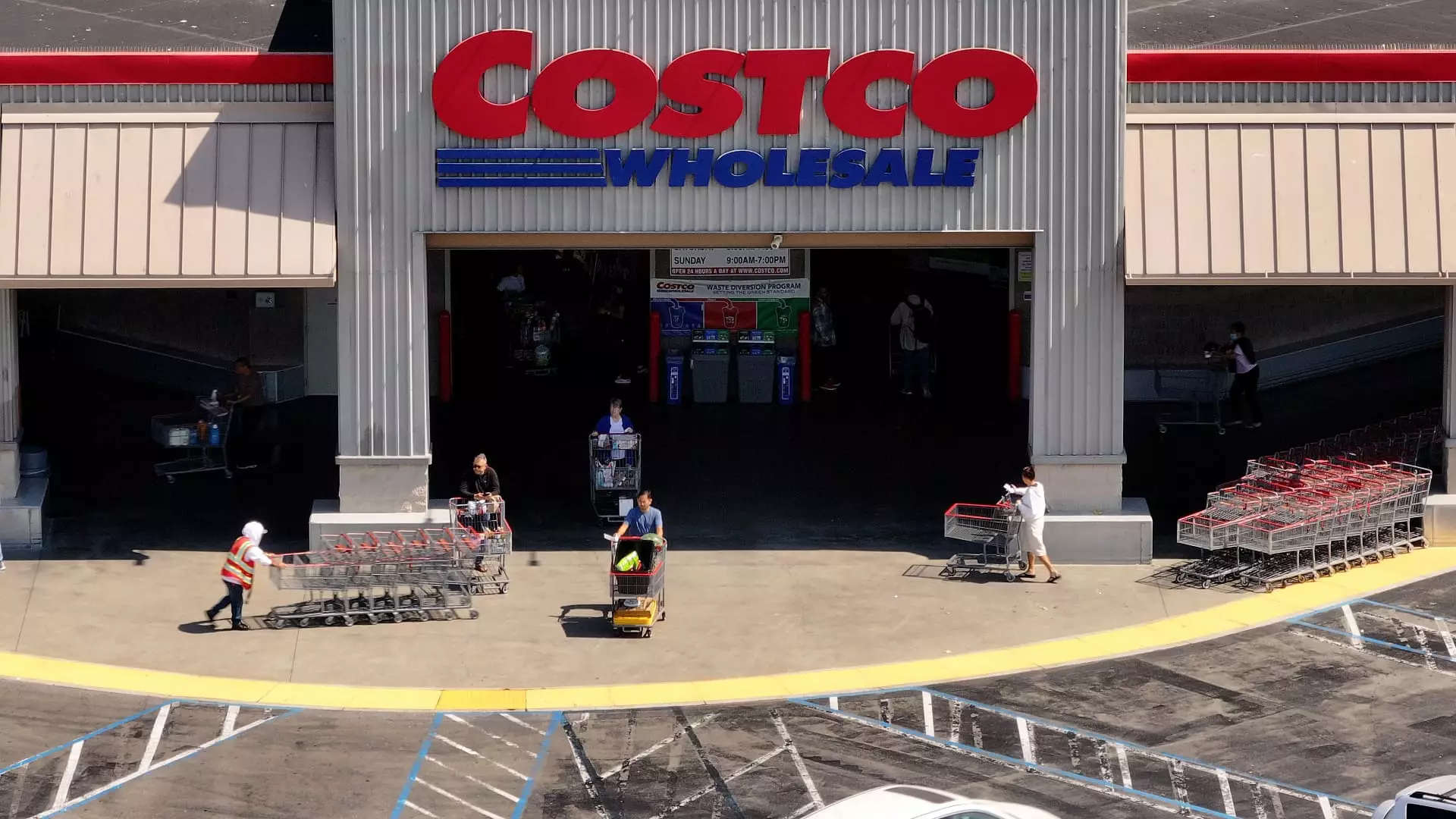Costco, the wholesale giant, has proven to be a titan in the retail world, defying the odds with a staggering 3% rise following its fiscal third-quarter results. With an impressive 8% year-over-year sales increase, it indicates that Costco’s model is not only sustainable but thriving. In a marketplace where many retailers face stagnation, Costco’s ability to exceed analysts’ expectations suggests a well-managed approach—perhaps an alignment of proper inventory management and consumer trust. Their consistent quality and competitive pricing are the bedrock of customer loyalty. The results chart a clear future: Costco is not just surviving; it is winning.
Ulta Beauty: Rising from the Ashes
The beauty industry is often viewed through a lens of fluctuating trends, yet Ulta Beauty continues to shine, with shares skyrocketing nearly 13%. This meteoric rise to a 52-week high can be attributed to a combination of savvy business maneuvers—reduced inventory losses and timely product launches. By adjusting its forecasts upwards, Ulta sends a clear message: they are in tune with the market’s pulse. It’s refreshing to witness a response to consumer demand, a testament to their targeted marketing strategies and agile supply chain management, identifying their strengths amidst fierce competition.
Gap: An Alarming Warning Sign
In stark contrast, Gap’s recent plunge of 20% raises severe concerns about its strategic direction. While they reported first-quarter earnings that surpassed expectations, the bleak forecast for the current-quarter sales suggests a company struggling to adapt. Analysts anticipated a minor growth of 0.2%, but instead, they face stagnation. It showcases the danger of myopic focus on short-term performance while neglecting long-term planning. This could signal to investors a lack of innovative spirit or an inability to connect with changing consumer habits, positioning Gap dangerously close to the precipice.
Elastic NV and Marvell Technology: Missed Opportunities
Elastic NV’s share drop of 12% indicates a clear disconnect between inflated expectations and reality. Their revenue forecast fell short, causing a rippling effect on investor confidence. Trends suggest that tech companies must maintain aggressive forecasts to stay buoyant; otherwise, they risk the wrath of market forces. Similarly, Marvell Technology’s underwhelming earnings per share of 62 cents did not resonate with analysts’ slightly higher estimates, leading to a 6% decline. Both companies present a cautionary tale of over-promising and under-delivering—a no-no in today’s volatile market.
Regeneron Pharmaceuticals and Sanofi: A Gasp of Breath
In the life sciences arena, Regeneron and Sanofi faced an alarming 18% and 5.6% drop after dismal late-stage trial results for their respiratory drug, itepekimab. This downturn is more than just a profit-loss; it signifies the unpredictable nature of pharmaceutical development, where expectations can swiftly evaporate. Investor confidence is deeply intertwined with consistent results in clinical settings. Such setbacks can lead to overwhelming skepticism that might hamper investment in future innovations.
PagerDuty and Zscaler: Divergent Paths in the Cloud
PagerDuty’s forecast of a weaker-than-expected second-quarter profit—with shares dipping by 11%—underlines the challenges facing tech companies under the cloud umbrella. They set their earnings per share too low for comfort, painting an ominous picture for stakeholders. On the flip side, Zscaler flourished, with an 8% rise fueled by third-quarter results that beat projections handily. This suggests that while some companies are faltering in the cloud arena, others are forging ahead through compelling performance and strategic foresight.
Palantir Technologies: Riding the Wave of Controversy
Palantir’s 5% gain—spurred by a report tying them to government data compilation initiatives during the Trump administration—sparks a mixture of intrigue and skepticism. Their choice to delve deeper into governmental contracts could either bolster their status as an invaluable asset or open them up to ethical scrutiny. This precarious balancing act is instructive for the tech industry, highlighting how intricately it’s woven with political tapestry. The ability to transform strategic partnerships into reliable revenue streams will be vital as the public eye continues to scrutinize their role.
In this unpredictable climate, variance in performance exemplifies the stark realities of corporate governance and market adaptation. The balance between growth and stagnation is manifest, marking a compelling narrative in the ongoing saga of Wall Street.

